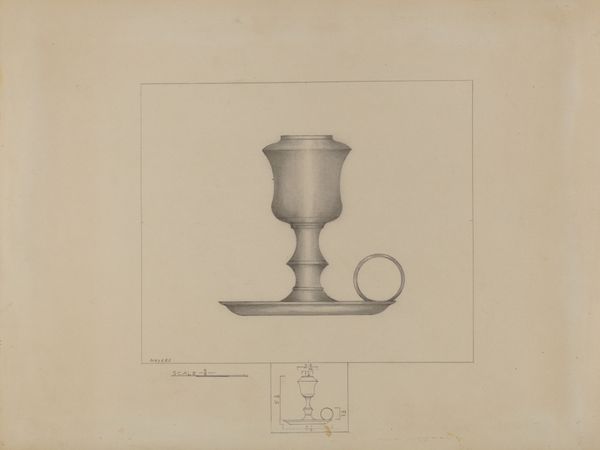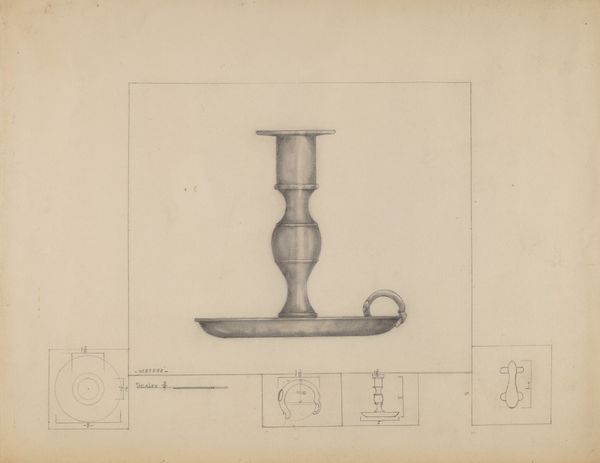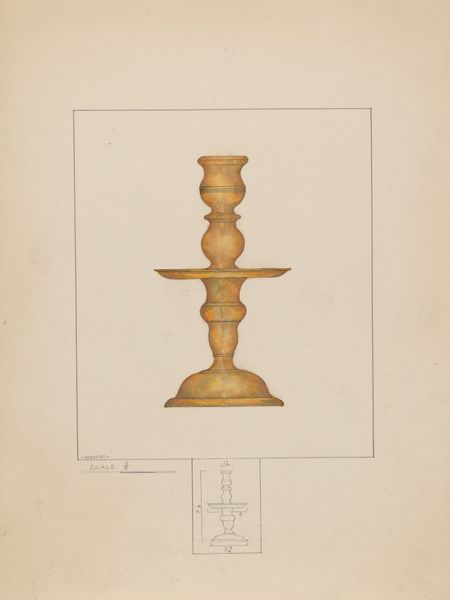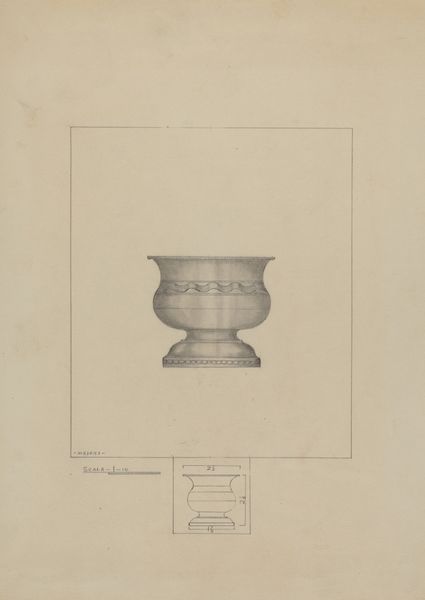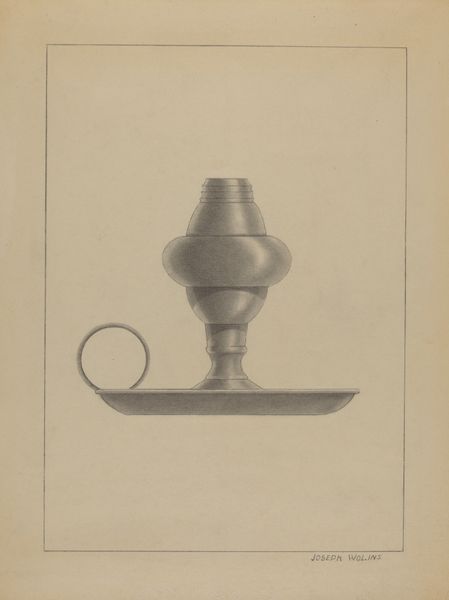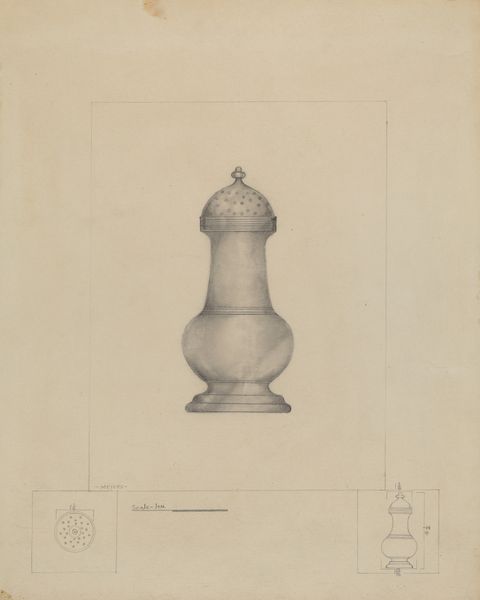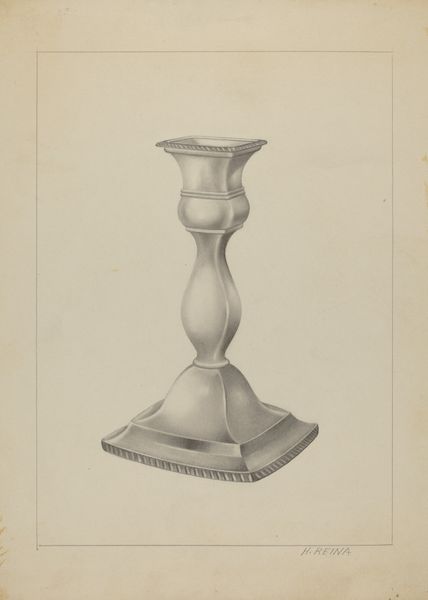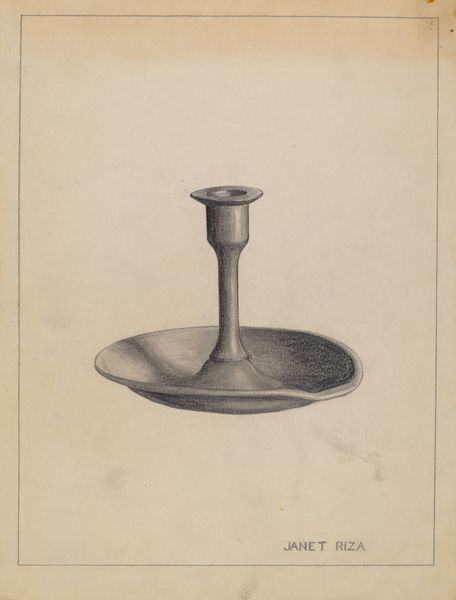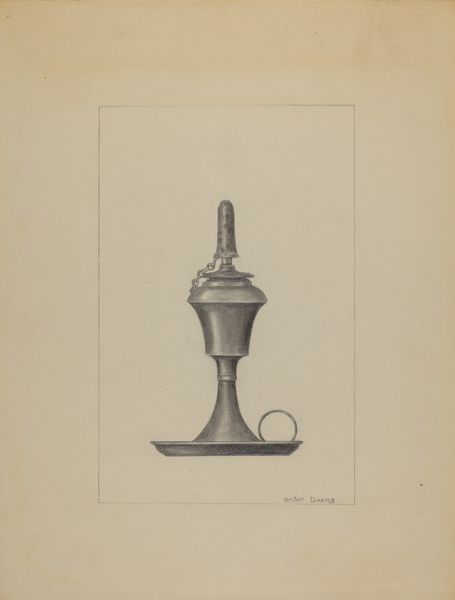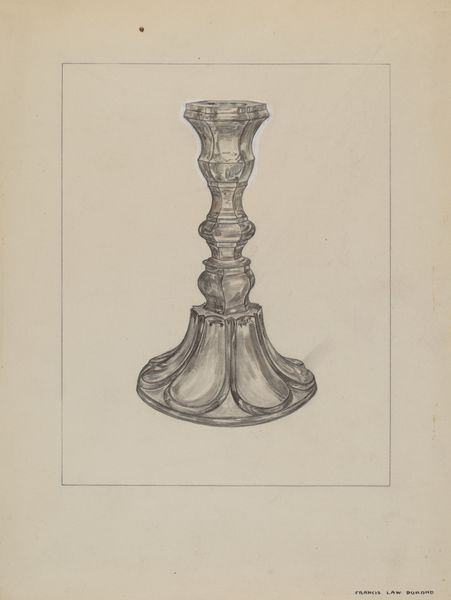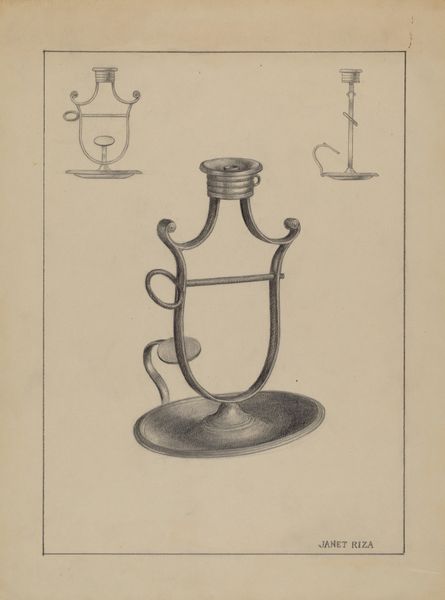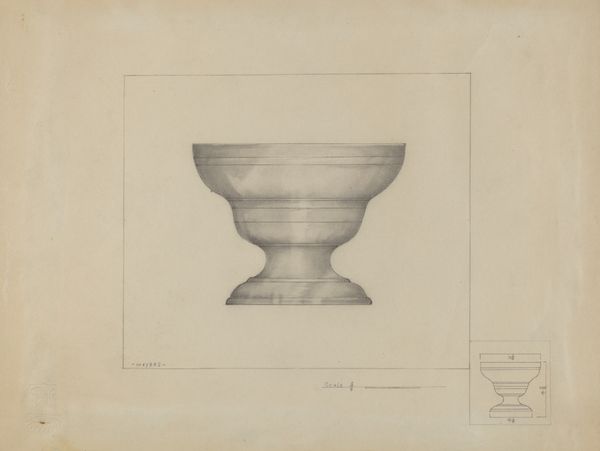
drawing, pencil, graphite
#
pencil drawn
#
drawing
#
geometric
#
pencil
#
graphite
Dimensions: overall: 30.4 x 22.7 cm (11 15/16 x 8 15/16 in.) Original IAD Object: 5 1/2" high; 5 1/4" wide
Copyright: National Gallery of Art: CC0 1.0
Curator: We are looking at a pencil drawing entitled "Candlestick" by Henry Meyers, created around 1936. It features a meticulously rendered candlestick, accompanied by technical specifications in the bottom corner. Editor: My first impression is one of quiet precision. The soft graphite shading gives a gentle glow, but the geometric design also evokes something coolly industrial. What's most striking is how functional it appears—almost an architect's elevation. Curator: That's astute. Meyers seems to have been influenced by the streamlined aesthetic popular during the mid-1930s, evident in its understated form. However, these were also volatile times. Consider how crucial even candlelight could be amidst periods of power instability. Editor: You're right, beyond surface appearance, light has immense symbolic importance—especially during uncertainty. Historically, the candlestick goes way back as an altar symbol, sacrifice and vigil. I can't help associating the simple geometry and delicate shade of the metallic figure with that sense of persistent, enduring light, a subtle beacon amid some type of hardship. Curator: A useful way to put this into historical context is how artistic endeavors provided resilience against wider precarity. Studying a design may even stand for something radical depending on how social factors affect reception. I'm more drawn by how he integrates a practical, design-minded perspective into the realm of fine art, revealing societal connections and trends. Editor: It shows that symbolism always evolves by adopting familiar motifs, or materials, in order to stay alive in new context. So, even within design plans or technical drawings—things we regard today as practical—there always runs an invisible current of social or cultural value from generation to generation, in different but recognizable patterns. Curator: Absolutely. It highlights how what we think of functional or aesthetically practical in reality becomes intertwined. It allows a more thoughtful interaction between viewers or audience. This interaction continues enriching public art consumption through various mediums as well. Editor: An enduring legacy of how basic forms acquire weight through meaning and become evocative images in the shared human experience, whatever happens next.
Comments
No comments
Be the first to comment and join the conversation on the ultimate creative platform.
